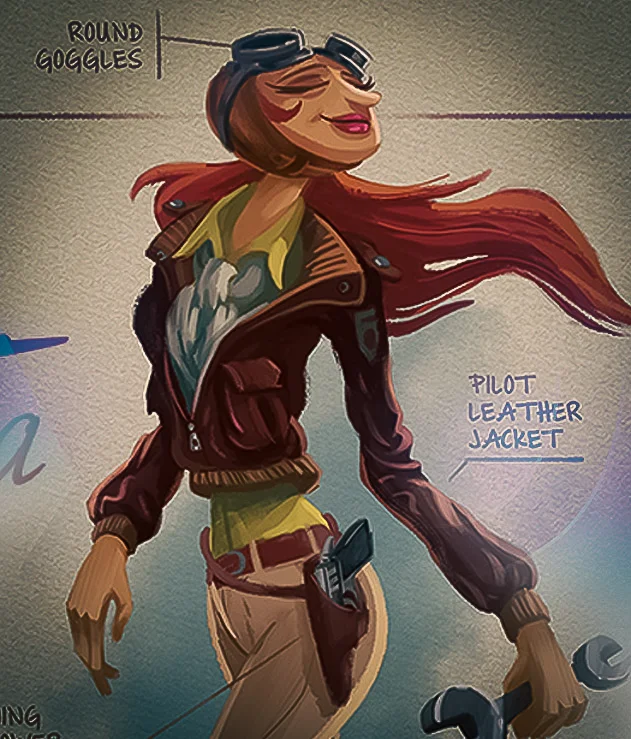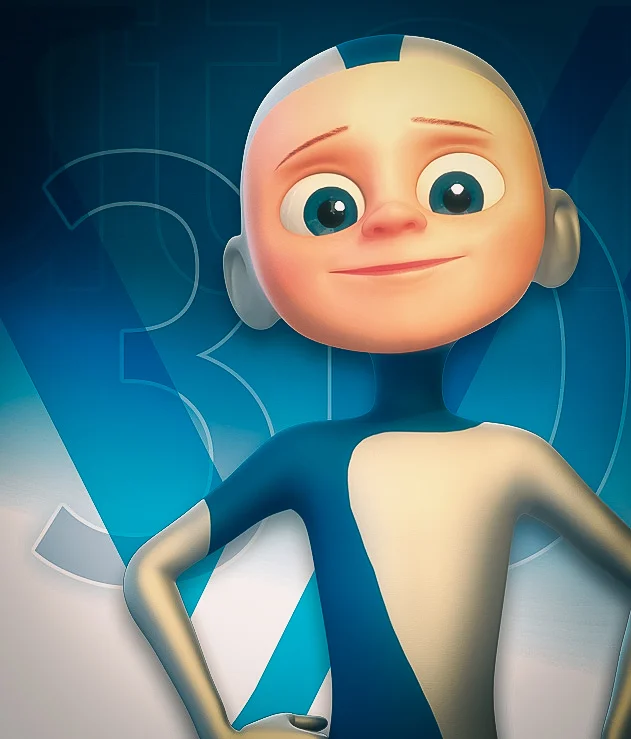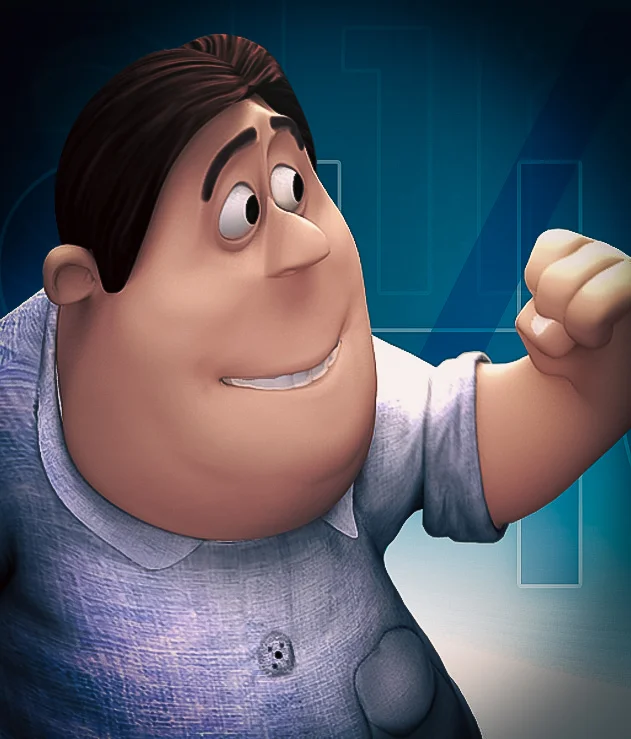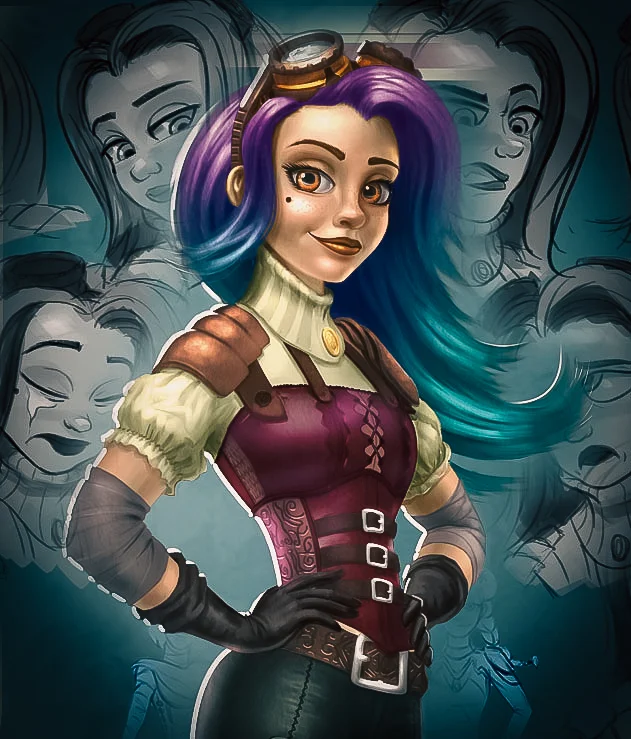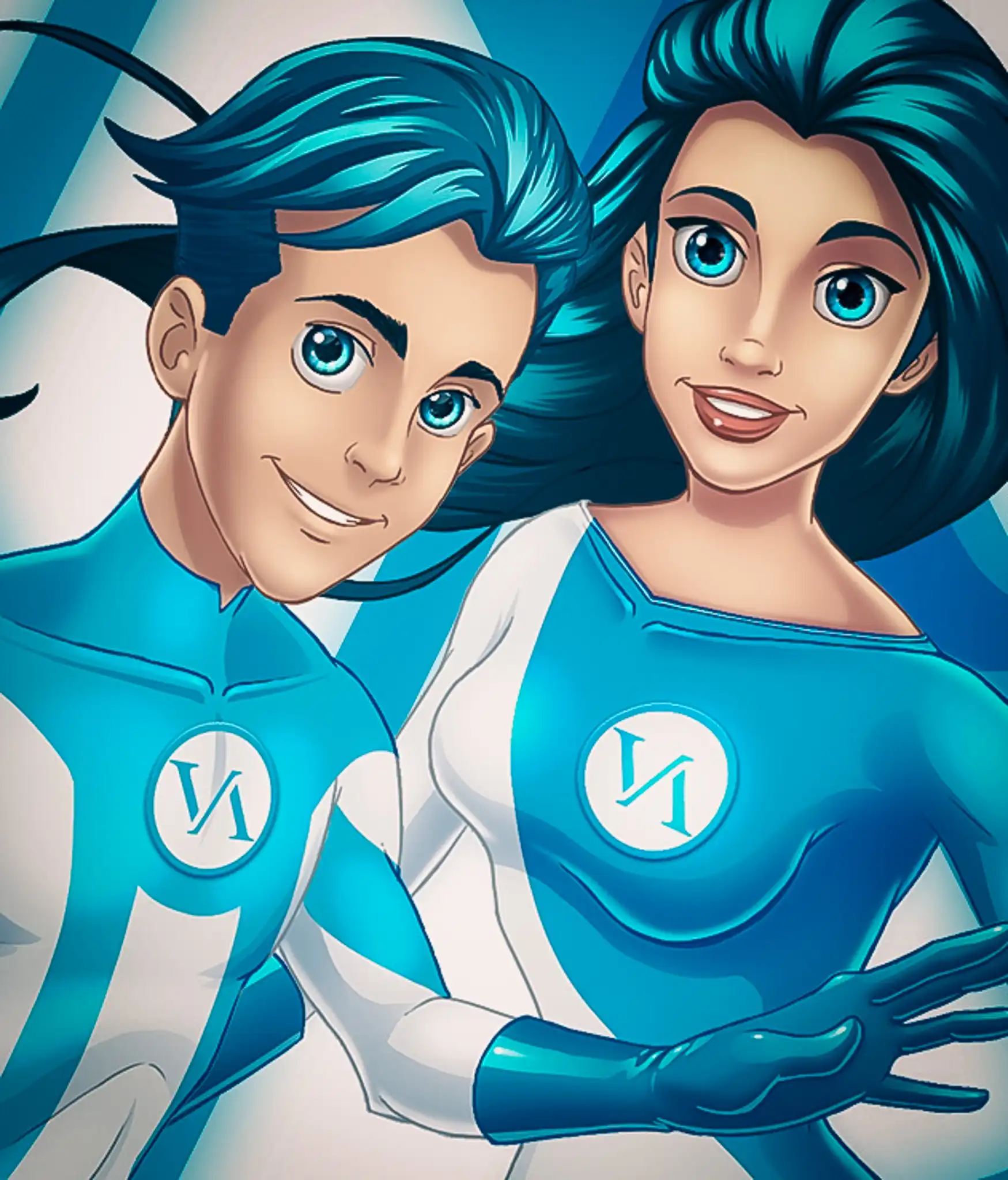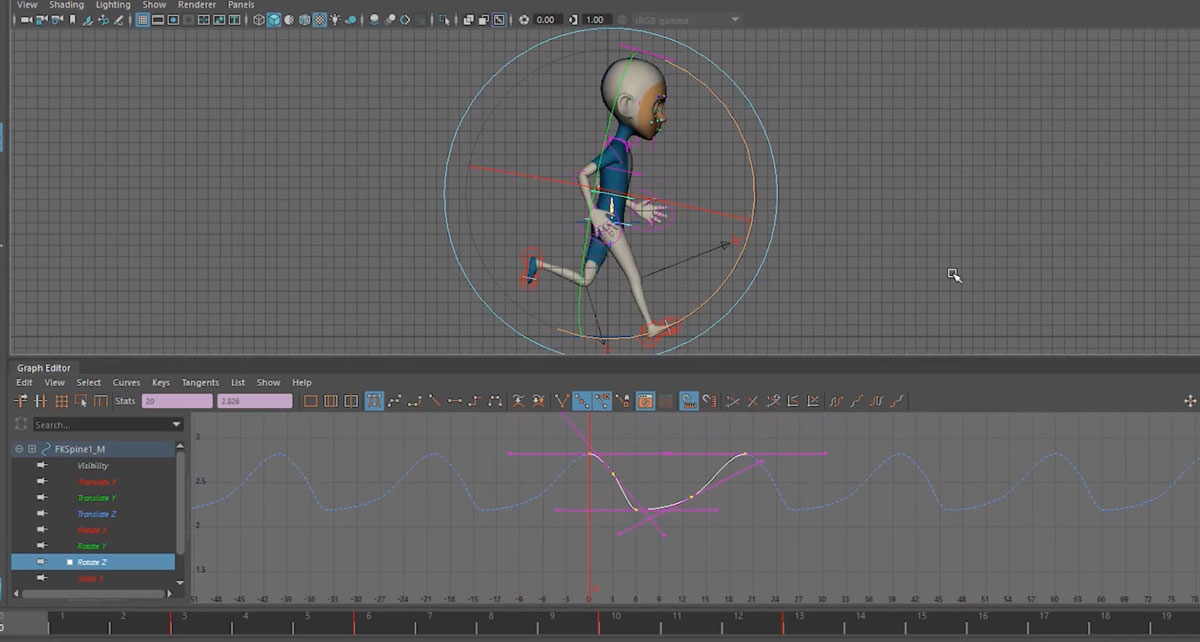 Image by: VANAS Plus
Image by: VANAS Plus
What is a Gameplay Animator?
Video games have become a massive industry, captivating millions of people around the world with their stunning visuals and immersive gameplay. Behind the scenes, there is a group of highly skilled professionals known as gameplay animators who play a crucial role in turning a game into a captivating experience.
As a gameplay animator, your job is to breathe life into the characters and in-game animations, ensuring that every movement feels realistic and engaging. Whether it's the graceful stride of a hero, the menacing attack of a villain, or the subtle facial expressions during a conversation, gameplay animators use their expertise in motion design to create memorable moments that players can't forget.
This article will explore the world of gameplay animation, from understanding what a gameplay animator does to how to pursue a career in this exciting field. Get ready to discover the magic behind the movement and unlock the secrets of bringing video game characters to life.
Key Takeaways:
- A gameplay animator is responsible for creating realistic and engaging animations for characters and in-game elements in video games.
- Motion design is a crucial aspect of gameplay animation, ensuring that every movement feels fluid and natural.
- Understanding character movement is essential for gameplay animators to create immersive experiences for players.
- Interactive storytelling and motion design go hand in hand, adding depth and immersion to the gaming experience.
- By studying animation and developing the necessary skills, you can pursue a fulfilling career as a gameplay animator.
Becoming a Gameplay Animator
If you have a passion for video games and a knack for bringing characters to life through animation, pursuing a career as a video game animator could be the perfect fit for you. In this section, we will discuss how you can turn your love for gaming and animation into a rewarding profession.
Skills and Qualifications
To excel as a video game animator, you'll need a combination of technical skills and creative abilities. Proficiency in animation software such as Autodesk Maya or Adobe Animate is essential. Additionally, knowledge of 2D and 3D animation techniques, character rigging, and scripting will greatly benefit your career.
Attention to detail, a strong sense of timing and motion, and the ability to work collaboratively are key qualities that will set you apart as a video game animator. Effective communication skills and the ability to adapt to evolving technologies and industry trends are also crucial.
Educational Opportunities
While it's possible to learn animation through self-study, pursuing formal education in video game design can provide a solid foundation for your career. Institutions like the Vancouver Animation School (VANAS) offer comprehensive programs in video game design that cover animation techniques, character development, and interactive storytelling.
Through hands-on projects and guidance from industry professionals, you can develop the necessary skills and build a strong portfolio that showcases your talents as a video game animator.
The Importance of Character Movement
Character movement is a fundamental aspect of video game animation. It is what brings the digital world to life and allows players to connect with the game on a deeper level. Understanding the principles of character movement, such as weight, balance, and exaggeration, is crucial to creating realistic and engaging animations.
As a video game animator, you'll have the power to manipulate character movement to evoke emotions, enhance gameplay experiences, and create memorable moments for players. Whether it's the graceful leap of a superhero or the subtle walk of a curious explorer, character movement sets the tone for the entire gaming experience.
By honing your skills, pursuing relevant education, and mastering the art of character movement, you can embark on an exciting career as a video game animator.
Animation in Video Games
Animation plays a crucial role in bringing video games to life. It is the art of creating movement and visual effects that make games visually captivating and immersive. In this section, we will explore the various types of game animation and how they contribute to the overall gaming experience. From character animations to environmental effects, every aspect of animation adds depth and realism to the virtual world.
Character Animation: One of the key elements of game animation is character animations. These animations bring the game's protagonists, antagonists, and supporting characters to life. Whether it's the hero's agile movements, the villain's menacing gestures, or the sidekick's comedic expressions, character animations add personality and emotion to the gameplay. Each character's movements are carefully designed and animated to reflect their unique traits and abilities, creating a sense of realism and connection with the player.
Environmental Effects: In addition to character animations, environmental effects play a significant role in enhancing the game world. These animations bring the game environment to life, whether it's the swaying of trees, the rippling of water, or the flickering of lights. They create a dynamic and immersive atmosphere that makes players feel like they are part of the virtual world. These animations not only add visual appeal but also contribute to the overall gameplay by providing interactive elements and sensory feedback.
Particle Animations: Another aspect of game animation is particle animations. These animations involve the creation and manipulation of small, individual elements such as smoke, fire, sparks, or explosions. Particle animations are used to add texture, movement, and visual effects to the game world. They create realistic and dynamic reactions to in-game events, making actions and interactions visually appealing and exciting.
Cutscene Animation: Cutscenes are cinematic sequences that advance the game's narrative and provide a break from gameplay. These sequences are often pre-rendered and involve complex animations and special effects. Cutscene animations are used to convey important story moments, character interactions, and dramatic events. They help to immerse players in the game's world and deepen their emotional connection to the story.
User Interface Animation: In-game animations are not limited to characters and environmental effects. User interface animations, such as menu transitions, button feedback, and loading screens, are also an essential part of game design. These animations contribute to the overall user experience by providing visual cues, feedback, and seamless transitions between different game elements. They make the interface interactive, intuitive, and visually engaging.
Overall, game animation is a multidimensional art form that brings virtual worlds to life. From character animations to environmental effects, every aspect of animation contributes to the immersive and captivating gaming experience. The skilled gameplay animators behind these animations create visually stunning and interactive worlds that players can explore and enjoy.
Interactive Storytelling in Games
Interactive storytelling is a captivating aspect of video games that immerses players in rich narratives and allows them to actively engage with the game world. Gameplay animators play a pivotal role in bringing these stories to life through their creative expertise.
Through the art of animation, gameplay animators contribute to creating narratives that captivate players and make them feel like they are a part of the game. From cutscenes that advance the plot to dialogue animations that convey emotions and character development, interactive storytelling in games adds depth and immersion to the gaming experience.
By utilizing their skills in motion design and character animation, gameplay animators breathe life into the game world, making it feel alive and responsive to the player's choices. They work closely with the game development team, collaborating with writers, designers, and programmers to ensure that the animations seamlessly blend with the gameplay mechanics, enhancing the overall storytelling experience.
Whether it's a heart-pounding action sequence or a touching cinematic moment, interactive storytelling relies on the talents of gameplay animators to create memorable and emotionally resonant experiences for players. Their ability to craft animations that evoke the desired emotions and convey the narrative effectively is what sets them apart in the world of game design.
The Role of Interactive Animators
Interactive animators are responsible for creating animations that respond to player input and interactions. Their work involves designing and implementing interactive elements that enhance the gameplay experience and contribute to the overall storytelling. By employing techniques like interactive dialogue animations and dynamic cutscene transitions, interactive animators elevate the narrative and make it more engaging for players.
Through their expertise in motion design and understanding of player psychology, interactive animators create animations that not only look visually stunning but also enhance player immersion and strengthen the emotional connection to the game world. Their work seamlessly blends with the interactive elements of the game, ensuring a smooth and immersive narrative experience.
Overall, interactive storytelling in games brings together the talents of gameplay animators, writers, designers, and programmers to create captivating narratives that players can actively engage with. By crafting animations that evoke emotions and respond to player input, gameplay animators contribute to the magic of interactive storytelling and bring the game world to life.
Motion Design in Games
Motion design plays a crucial role in the world of gameplay animation. It involves the principles and techniques used to create fluid and realistic movements for characters and objects in video games. By mastering motion design, gameplay animators can enhance the overall player experience and immerse players in captivating virtual worlds.
One important aspect of motion design is conveying a sense of weight and gravity in character movements. By carefully manipulating timing, spacing, and arcs, gameplay animators can make characters feel grounded and believable. Whether it's a warrior swinging a sword or a car zooming through a race track, realistic and well-executed movements can make the gameplay come alive.
Motion design also involves creating impactful and visually appealing animations. From explosive special effects to mesmerizing spellcasting animations, gameplay animators utilize their skills to captivate players and bring the game world to life. Through creative use of timing, anticipation, and follow-through, they create animations that are both visually stunning and functionally effective within the game mechanics.
In addition to character animations, motion design extends to the movement of objects and environmental elements within the game. Whether it's the swaying of trees in the wind, the ripple effect of water, or the destruction of a building, realistic and engaging object animations contribute to the immersive experience of the game.
Motion design is the art of breathing life into the virtual world. It's about creating movements that feel natural, dynamic, and visually appealing, making players feel truly connected to the game.
To achieve these stunning motion designs, gameplay animators utilize various software tools such as Autodesk Maya, Blender, and Adobe After Effects. These tools enable them to create intricate animation sequences, implement motion capture data, and add finer details like facial expressions and gestures.
In conclusion, motion design is a fundamental aspect of gameplay animation in video games. It encompasses the principles and techniques used to create fluid, believable, and visually appealing movements for characters, objects, and environmental elements. By mastering motion design, gameplay animators can enhance the gameplay experience, immersing players in captivating virtual worlds that truly come to life.
Conclusion
In conclusion, gameplay animation is a dynamic and exciting field that brings characters, interactive storytelling, and motion design together to create immersive video game experiences. As a gameplay animator, you have the opportunity to shape the virtual worlds that players explore and interact with.
By studying animation at VANAS, you can gain the necessary skills and knowledge to excel in this industry. The comprehensive curriculum covers various animation techniques, character development, and storytelling principles.
Embark on a fulfilling career where your creativity can shine. With your expertise, you can breathe life into characters, craft engaging narratives, and create visually stunning motion designs that captivate players. Take the first step towards a rewarding future by exploring the world of video game design and bringing your imagination to life through the art of animation.
FAQ
What is a Gameplay Animator?
A gameplay animator is responsible for bringing the characters and in-game animations to life, creating interactive storytelling experiences through motion design.
How can I become a Gameplay Animator?
To pursue a career as a gameplay animator, it is important to develop the necessary skills and qualifications. You can explore educational opportunities such as studying video game design at VANAS. Understanding character movement is also crucial in creating immersive gameplay experiences.
What is the role of animation in video games?
Animation plays a vital role in video games as it enhances the overall gaming experience. It includes character animations, environmental effects, and more, making games visually engaging and immersive.
How do gameplay animators contribute to interactive storytelling in games?
Gameplay animators play a key role in creating interactive storytelling experiences in video games. They bring elements like cutscenes and dialogue animations to life, adding depth and immersion to the gaming experience.
What is motion design in games?
Motion design is an important aspect of gameplay animation. It involves applying principles of motion to create fluid and realistic movements for characters and objects in games, enhancing the overall player experience.

